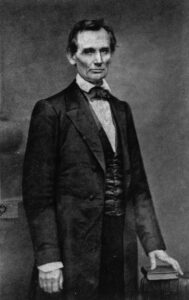 In February 1860, the western-bred Abraham Lincoln must have been astonished by the hustle and bustle around lower New York City. Having crossed the Hudson River from Jersey City to Manhattan, Lincoln made his way to the Astor House, one of most luxurious hotels in New York City, conveniently located near City Hall and Publishers Row (aka, Newspaper Row or Printing House Square) housing the city’s most important newspapers. New York City had grown by over fifty percent just in the last decade, many of whom were immigrants from Ireland, Germany, and other European nations. If Lincoln’s room was on the ground floor of the Astor House, he would have looked out on St. Paul’s Chapel, built in 1766 and where George Washington attended services immediately after taking the oath of office as the first president of the United States. No doubt Lincoln would have looked into the chapel. Today, from a vantage point on Broadway, you can see the new One World Trade Center looming behind the Chapel’s historic spire. From the other side, standing in the burying ground facing the skyscraper, is a “Bell of Hope” rung every year on September 11 to reflect both the mourning of that day and the Chapel’s role as a refuge during that warm, clear cataclysmic day in 2001.
In February 1860, the western-bred Abraham Lincoln must have been astonished by the hustle and bustle around lower New York City. Having crossed the Hudson River from Jersey City to Manhattan, Lincoln made his way to the Astor House, one of most luxurious hotels in New York City, conveniently located near City Hall and Publishers Row (aka, Newspaper Row or Printing House Square) housing the city’s most important newspapers. New York City had grown by over fifty percent just in the last decade, many of whom were immigrants from Ireland, Germany, and other European nations. If Lincoln’s room was on the ground floor of the Astor House, he would have looked out on St. Paul’s Chapel, built in 1766 and where George Washington attended services immediately after taking the oath of office as the first president of the United States. No doubt Lincoln would have looked into the chapel. Today, from a vantage point on Broadway, you can see the new One World Trade Center looming behind the Chapel’s historic spire. From the other side, standing in the burying ground facing the skyscraper, is a “Bell of Hope” rung every year on September 11 to reflect both the mourning of that day and the Chapel’s role as a refuge during that warm, clear cataclysmic day in 2001.
Lincoln’s day was less devastating but also less warm. The weather was frigid and light snow was falling, but the Young Men’s Committee who had taken over sponsorship of his Cooper Union presence took him around Manhattan to see the sights. One stop was Mathew Brady’s photographic emporium, now housed in a temporary studio at 643 Broadway while his new studio was being prepared. Brady was already a celebrity in his own right, and having your photo taken by Brady was quickly becoming a necessity for any up-and-coming politician or social climber. This fit well with Lincoln, who had embraced the new technology of photography within a few years of its invention and had made an effort to have a photograph taken whenever he did anything noteworthy. This certainly fit the requirements and so Lincoln sat for a series of photos, one of the best decisions he would make. Not only would the Cooper Union address itself be widely published in the newspapers, but Brady would also reproduce one of these photos on the new carte-de-visite format, enabling thousands of copies to be made, sold, and broadly circulated. While many historians today refer to Cooper Union as “the speech that made Lincoln president,” the Brady photograph accentuated that by putting a face in front of the public at large. To these two I would add a third component that worked in synergy to make Lincoln president – publication of the Lincoln-Douglas debates in book form. And, of course, there was his post-Cooper Union tour of New England.
Having expected to speech at Beecher’s church to a religiously abolitionist crowd, Lincoln begged away from his tour guides and the many impromptu visitors to lock himself in his hotel room and edit his speech for an audience likely to expect a more erudite speech. Eventually he was escorted by carriage to Cooper Union, which despite the snow was reasonably well attended, about 1,500 people. He was introduced by William Cullen Bryant. Starting slowly, as was his habit, he quickly got into his material and held the audience enrapt for the next one and half hours.
I wrote previously about the gist of the speech, which you can read in this earlier post.
[Photo credit: By Mathew Brady, February 27, 1860 – Public Domain, Wikimedia Commons, ID: cph 3a0910]

Coming in February 2026: Unable to Escape This Toil
Available now – Lincoln: The Fire of Genius: How Abraham Lincoln’s Commitment to Science and Technology Helped Modernize America is available at booksellers nationwide.
Limited signed copies are available via this website. The book also listed on Goodreads, the database where I keep track of my reading. Click on the “Want to Read” button to put it on your reading list. Please leave a review on Goodreads and Amazon if you like the book.
You also follow my author page on Facebook.
David J. Kent is President of the Lincoln Group of DC and the author of Lincoln: The Fire of Genius: How Abraham Lincoln’s Commitment to Science and Technology Helped Modernize America and Lincoln: The Man Who Saved America.
His previous books include Tesla: The Wizard of Electricity and Edison: The Inventor of the Modern World and two specialty e-books: Nikola Tesla: Renewable Energy Ahead of Its Time and Abraham Lincoln and Nikola Tesla: Connected by Fate.



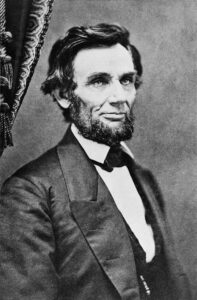 The newly bearded President-Elect Abraham Lincoln is making his way from Springfield, Illinois to Washington for his inauguration as president of the United States. But today, February 18, 1861, he was spending an eventful day traveling to Albany, New York.
The newly bearded President-Elect Abraham Lincoln is making his way from Springfield, Illinois to Washington for his inauguration as president of the United States. But today, February 18, 1861, he was spending an eventful day traveling to Albany, New York.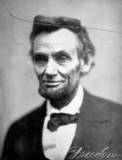 While Abraham Lincoln had a well-deserved reputation as a soft touch during the Civil War, readily finding excuses to offer mercy to Union soldiers who had fallen asleep or abandoned their posts, he also approved the hanging of the only slave trader ever to be executed by the United States. Captain Nathaniel Gordon was a repeat offender, caught with nearly 900 enslaved men, women, and children crammed into the tiny space below decks off the coast of Congo. But Gordon wasn’t particularly worried. For the first 40+ years of the law that made international slave trading illegal and punishable by death, no man was ever executed. Why now? And why by Lincoln?
While Abraham Lincoln had a well-deserved reputation as a soft touch during the Civil War, readily finding excuses to offer mercy to Union soldiers who had fallen asleep or abandoned their posts, he also approved the hanging of the only slave trader ever to be executed by the United States. Captain Nathaniel Gordon was a repeat offender, caught with nearly 900 enslaved men, women, and children crammed into the tiny space below decks off the coast of Congo. But Gordon wasn’t particularly worried. For the first 40+ years of the law that made international slave trading illegal and punishable by death, no man was ever executed. Why now? And why by Lincoln?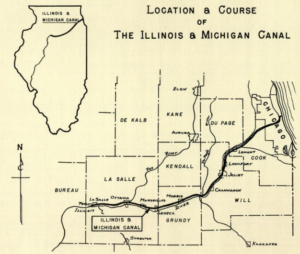 Abraham Lincoln was a steady proponent of Internal Improvements projects in Illinois. That said, there were problems. The few projects initiated randomly to encourage widespread district support resulted in a hodgepodge of disconnected rail lines, many of which ran only a few miles to nowhere in particular. Most projects simply disappeared.
Abraham Lincoln was a steady proponent of Internal Improvements projects in Illinois. That said, there were problems. The few projects initiated randomly to encourage widespread district support resulted in a hodgepodge of disconnected rail lines, many of which ran only a few miles to nowhere in particular. Most projects simply disappeared. Abraham Lincoln was always interested in technology, so when the Civil War arrived as soon as he was inaugurated, he worked hard to convince the usually conservative military to employ the latest technological advances. One such advance caused him to look to the skies to give every advantage to Union troops. That was the use of balloons in war.
Abraham Lincoln was always interested in technology, so when the Civil War arrived as soon as he was inaugurated, he worked hard to convince the usually conservative military to employ the latest technological advances. One such advance caused him to look to the skies to give every advantage to Union troops. That was the use of balloons in war.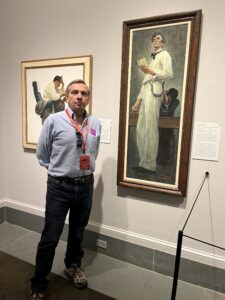 As 2024 comes to an end, it’s time to recap how it all went in the writer’s life. At least for this one writer. Once again, it was a busy year, with some residual events related to Lincoln: The Fire of Genius, some new obligations, and some really big news (really!). You can check out my other year-end posts by reading about
As 2024 comes to an end, it’s time to recap how it all went in the writer’s life. At least for this one writer. Once again, it was a busy year, with some residual events related to Lincoln: The Fire of Genius, some new obligations, and some really big news (really!). You can check out my other year-end posts by reading about  Traveling seems to be done for the year. At least mostly (there might be one short overnight trip squeezed in before New Years). Enough to look back on the year in a traveler’s life. You can see the
Traveling seems to be done for the year. At least mostly (there might be one short overnight trip squeezed in before New Years). Enough to look back on the year in a traveler’s life. You can see the 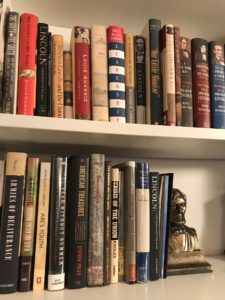 How time flies. The year 2024 is almost over and I think I’ve finished accumulated new books for the year, to it’s time for my annual Abraham Lincoln book acquisitions post. As you’ll quickly see, my goal to reduce the number of books I buy has been relatively successful-the total number of books acquired is definitely fewer-coming in at 25 new acquisitions. Reducing the total number of books? Not so successful. You can read about past years acquisitions by
How time flies. The year 2024 is almost over and I think I’ve finished accumulated new books for the year, to it’s time for my annual Abraham Lincoln book acquisitions post. As you’ll quickly see, my goal to reduce the number of books I buy has been relatively successful-the total number of books acquired is definitely fewer-coming in at 25 new acquisitions. Reducing the total number of books? Not so successful. You can read about past years acquisitions by 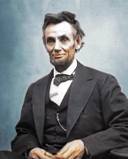 On this date, December 11, 1862, Abraham Lincoln transmitted to the U.S. Senate his response to their request that he “furnish the Senate with all information in his possession touching the late Indian barbarities in the State of Minnesota, and also the evidence in his possession upon which some of the principal actors and head men were tried and condemned to death.”
On this date, December 11, 1862, Abraham Lincoln transmitted to the U.S. Senate his response to their request that he “furnish the Senate with all information in his possession touching the late Indian barbarities in the State of Minnesota, and also the evidence in his possession upon which some of the principal actors and head men were tried and condemned to death.”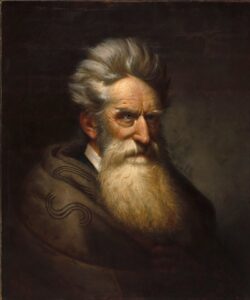 Back in the days when inciting an insurrection against the government was considered disqualifying, on December 2, 1859, abolitionist John Brown was hanged.
Back in the days when inciting an insurrection against the government was considered disqualifying, on December 2, 1859, abolitionist John Brown was hanged.






